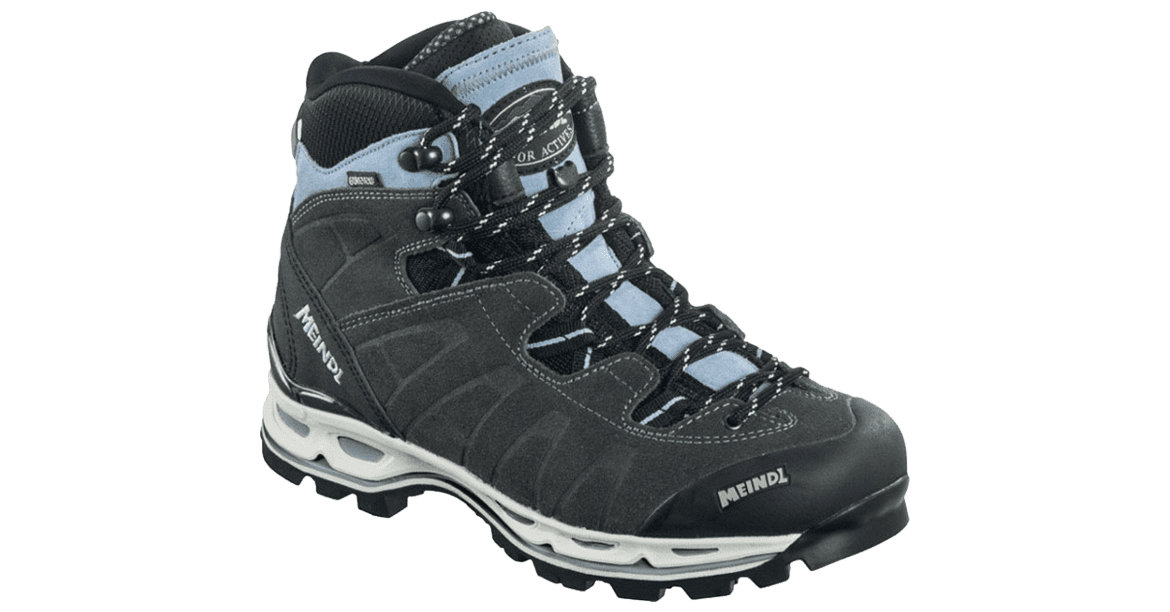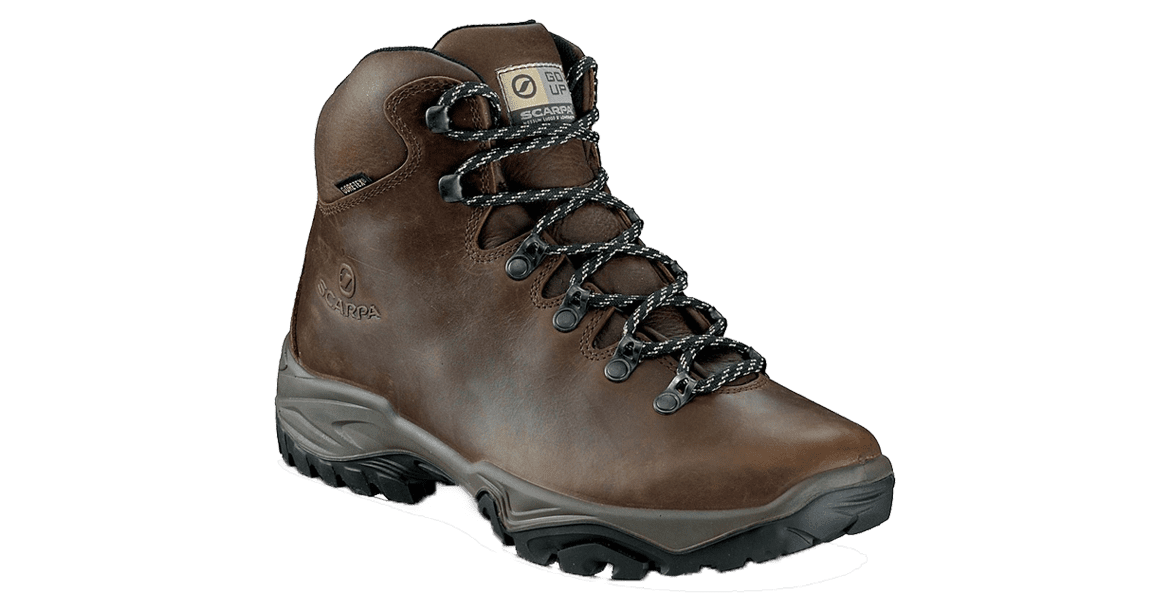30 November 2015
As a walker taking care of your feet is one of the most important things you can do. If you only buy one bit of kit for your holiday, we’d recommend you get the best pair of walking boots you can afford. Nothing takes the joy out of walking more than blistered, sore and pinched feet!
Outdoor stores and online sites are overflowing with different brands and styles of walking footwear and the process of investing in a new pair can be bewildering, especially when you bought your last pair 10 years ago, had a choice of 2 options, and they have since become comfier than your slippers.
This guide covers the different features to consider before buying a new pair of boots and will help you make the right decision. One tip that is absolutely key before we go any further, and which we can’t stress enough, is to buy them early, well ahead of when you need them, and to wear them in. Wear them around the house, wear them to the shops, wear them out in the garden!
Walking Boots – Walking Shoes – Approach Shoes
Where are you going?
All walking boots are made with a specific environment in mind. They are designed specifically for a certain terrain and condition under foot, with the flexibility of the sole, the materials used, and the ankle height all reflecting this. If you plan to walk on good, easy/moderate, well-trodden footpaths, then go for a lightweight boot or shoe, with a mid-ankle, and with a flexible sole that will help your foot move naturally and be comfortable on long days.
At the other end, if you plan to walk on uneven, steep, high level trails, you want a more rigid boot with high ankle support. Certainly, a holiday with Collett’s will encompass many different terrains and you can vary day to day, but the point is that the further you’re likely to stray from even, flat ground, the more supportive and sturdy the boot needs to be.
Walking Boots – Walking Shoes – Approach Shoes
There is a huge array of walking footwear on the market, and following on from our last point, what matters is knowing what you’re looking for in your footwear and how it affects your experience out on the trail.
Walking Boots – are the go-to option for most walkers. They are versatile and sturdy, and can handle almost any terrain, and are very supportive of the ankle and through the sole. They are really durable and built to last, as well as waterproof and breathable. They are great for hill walking, wet weather, long distance, and challenging terrain.
Example brands: Scarpa, Meindl, Brasher, Asolo
Walking Shoes – are a great option when full walking boots are a little overkill, on shorter, flatter routes or in warm, dry weather and when you aren’t carrying a big pack. They are a lightweight alternative, giving great comfort and protection when the route isn’t too tough and ankle support isn’t too essential. They are excellent for fast and light walking, warm dry weather and easier-going trails.
Example brands: Salomon, North Face, Merrel, Keen.
Approach Shoes – are designed for the rocky approaches to a climbing crag. An in-between to walking and climbing shoes, made for grip and precision and ideal for short but tricky routes. The low cut ankle means you have great mobility, and have sticky, grippy soles for traction on rock. They are good for scrambling and are very versatile.
Example brands: Mammut, Haglofs, Scarpa
Waterproof?
Most modern boots are and will be lined with a waterproof membrane. Whilst no boot can be classed as fully waterproof, it is important to keep feet dry and to prevent rubbing and blisters. This comes about from wet conditions but also from sweat, and so you should look for a boot that is both waterproof and breathable, and can keep wet out but let it out too. Gore-Tex lined boots are particularly good at letting your feet breathe.
If you expect very wet conditions full leather boots are recommended, which are naturally more waterproof than synthetic.
It might be worth investing in a pair of gaiters – a waterproof cuff that will prevent water running down into your boot as you walk in rain, snow or wet grass, or even stop scree annoyingly flicking into your boots.
Leather vs Synthetic
For many years leather was the material of choice for outdoor footwear because leather is tough, durable and easy to care for. Nowadays advances in modern synthetic material mean that walking boots are made using new fabrics that offer toughness, durability, breathability and comfort. Modern fabric footwear will not be as tough or as durable as the good old leather footwear but will almost certainly offer better comfort and breathability. Leather boots generally will last longer than synthetic, if well looked after. A synthetic pair of boots are unlikely to last more than 2-3 years, whereas a leather pair will easily last 5-6 years (and longer). Fit, however, is always the key decision maker, and you should start here. Particularly when it is your first pair of boots, choose comfort over durability and then further down the line when your feet start to toughen up, you can invest in tougher footwear.
Socks
Socks should not be overlooked and really are worth the (sometimes surprising) price tag. Get a pair that actively wick sweat and moisture away from your feet to your boots, and have good padding in the heel and toe areas, which will help absorb the impact throughout the day. Never wear cotton socks as these absorb and retain moisture and can lead to blisters (and cold feet in winter!). Here in the Collett’s office, we swear by merino wool socks and also to never wear two pairs of socks at any one time, thereby only heightening blister risk.
General Fit
We would always recommend trying new boots on in a store rather than buying online, and the fitting advice and after sales customer service that comes with this is well worth the slight premium in price. The fit of a walking boot is quite different to a standard shoe’s sizing.
- Wear around the house – generally retailers will allow you to return the boots within a set time period as long as they have not been worn outside.
- Your toes should never press on the front of the boot. Your feet should feel secure, with no heel-lift but there should be room for your toes to wiggle. If you can (just) squeeze a finger down at the back with your toes pushed into the front, then you are good.
- Consider the width. The uppers of boots should hold your feet in place but will soften a little with time, whilst the sole won’t and really should cradle your foot right to the edges. If it feels too wide or narrow at the ball of your foot, then move along. Take the insoles out and stand on them, to see how your feet spread – if they extend beyond the insole, chances are they will be too small.
- Try your boots on in the afternoon, when your feet are slightly swollen and more reflective of how your feet will be on a day’s hike.
This should be a helpful introduction to get you started when considering buying a new pair of walking boots or shoes. This is by no means exhaustive and if you have any tips or personal experience to add we’d love to hear from you. Please call us on 01799 513331 if you would like to talk about any aspect of a new pair of boots. Any one of us here in the office would love the opportunity to pass on our personal experience and have a change from our normal holiday chat! We have plenty of walking years between us and in fact we will soon be sharing each of our own preference for walking footwear.
Thanks to Kelly Paddon, one of our full time members of staff for the superb article and to the The Climbers Shop in Ambleside for providing the photos – www.climbers-shop.com



















